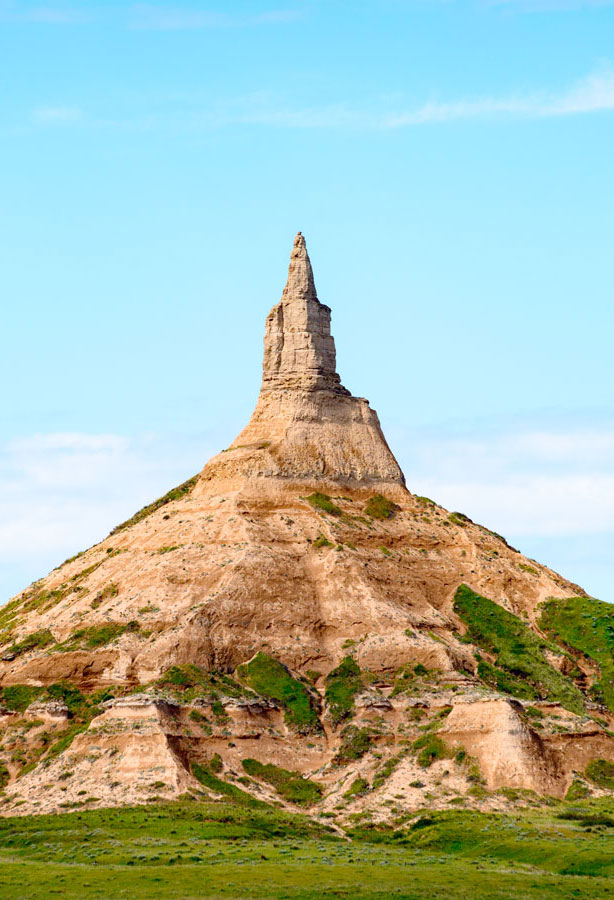The world is full of natural wonders, and the U.S. has more than its fair share of them. And while many of these interesting sites bear fairly straightforward names — Grand Canyon and Rocky Mountains, we’re looking at you — others have names that are unusual, if not downright weird. Explore six of our favorite strangely named natural places.
Thor’s Well – Oregon
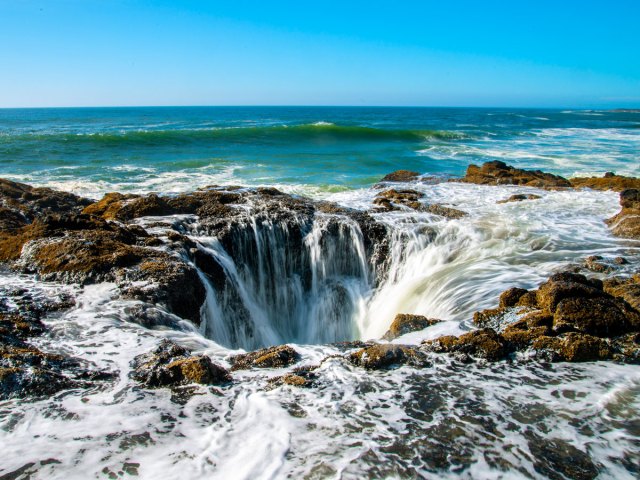
Along the shoreline of Oregon’s stunning Cape Perpetua, an ominous hole drains into the Pacific Ocean’s seemingly bottomless depths, only to forcefully spray the waters back up during high tide. Local legend has it that this so-called “gate to hell” was created by a lightning bolt from Thor, the Norse god of thunder. Scientists, however, insist that the sinkhole began life as a cave, which was eroded by waves carving into the basalt shoreline and later collapsed both at the top and bottom. Regardless, it’s a favorite attraction for curiosity seekers and photographers.
Chimney Rock – Nebraska
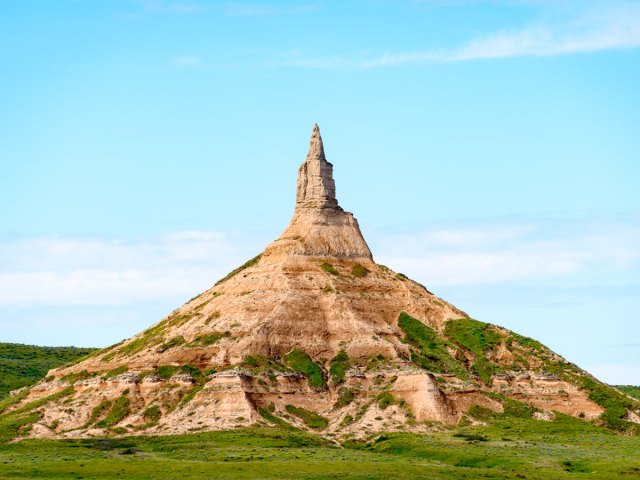
In the 1800s, settlers heading West on the Oregon, California, Mormon, and Pony Express trails didn’t have GPS, and landmarks to guide them across the flat prairies were few and far between. Rising nearly 500 feet above the North Platte River Valley, the sandstone spire known as Chimney Rock was a welcome sight to travelers, announcing they were near the end of the Great Plains and beginning the Rocky Mountain portion of their journey. Today, the landmark graces the back of the Nebraska state quarter. Although the rock itself is on private land, the nearby visitor’s center and museum still guarantees great views.
Petrified Forest – Arizona
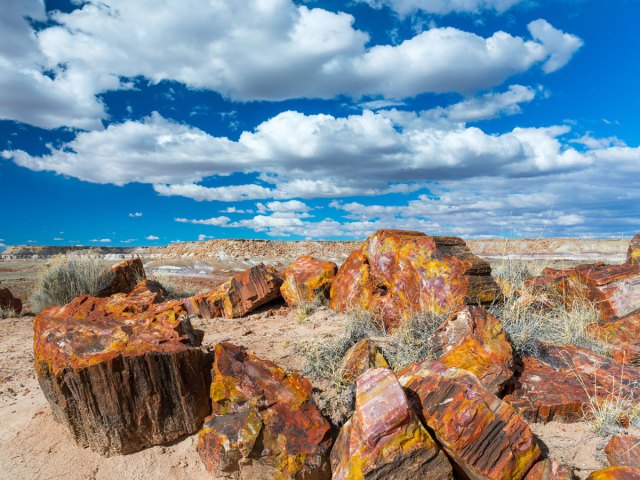
More than 200 million years ago, this land along historic Route 66 in northeastern Arizona’s Navajo and Apache counties was a forest, dense with trees and rich in wildlife. Today, this national park high in the Painted Desert is a treasure for archaeologists, paleontologists, and geologists. The Petrified Forest also draws many visitors to its colorful petrified remains of the ancient trees (the world’s largest collection) and the fossils left by 78 species — including dinosaurs — that roamed here during the Late Triassic period. In addition to otherworldly landscapes, visitors will also find hiking and biking trails, the historic Painted Desert Inn, and Puerco Pueblo, a 100-room pueblo built by the ancestral Puebloans in the 1200s.
Eternal Flame Falls – New York
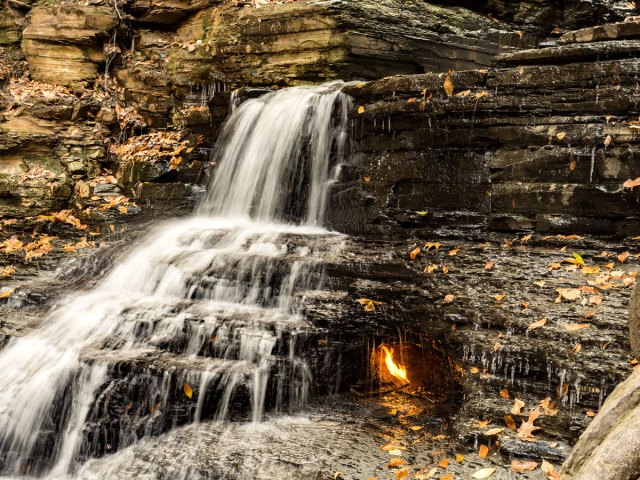
While there are a few hundred naturally occurring “eternal flames” in the world — most caused by natural gas seeping up through superheated rocks — this eternal flame in western New York’s Erie County is both beautiful and geologically unique, creating a mystery that scientists have yet to solve. The flame, which usually measures just about eight inches tall, lies in a shallow grotto behind a waterfall that plunges 35 feet into Chestnut Ridge Park’s Shale Creek. The flame isn’t always eternal, so be sure to carry a lighter with you if you make the steep, often slippery 45-minute hike to the falls.
Sailing Stones of Death Valley – California

Aliens? Ghosts? Visitors have been puzzled over the trails left by the so-called “Sailing Stones” of Death Valley for hundreds of years. The mystery of how these rocks — each weighing up to 700 pounds — moved themselves, sometimes for hundreds of feet, along an ancient lakebed was solved by a paleobiologist in 2013. When ice forms over the rocks in winter and melts, wind blows the ice, water, and rocks, which makes it seem as if the stones move themselves.
Nonetheless, the magic of “the Racetrack” still remains — and who knows what other secrets this desert holds? If you visit, you’ll need a high-clearance vehicle with heavy-duty tires and to be prepared for harsh conditions and no cell service. Driving off-road is strictly prohibited, and walking in muddy conditions will leave footprints that tarnish the site for future visitors.
Big Bone Lick State Historic Site – Kentucky
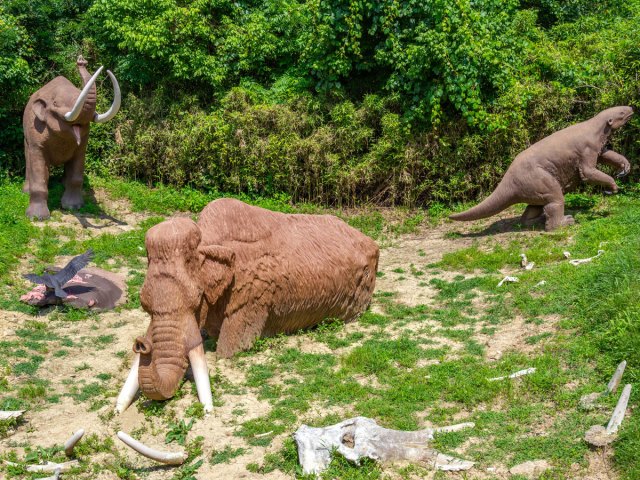
Although the name might make you giggle, no bones were actually licked at this scenic site near the Ohio River. But during the last ice age, a sulphur spring deposited minerals here, including salt, which drew hordes of Pleistocene megafauna such as mastodons, mammoths, and the ancestors of present-day horses.
The French recorded what they thought were elephant bones at Big Bone Lick in 1739, and explorers Merriweather Lewis and William Clark sent specimens to President Jefferson in the early 1800s. Fossils are on display at the museum and visitor center, and modern megafauna (in the form of a bison herd) roam freely at the site. There are also campgrounds, miles of hiking trails, and other recreational opportunities. Best of all, admission is free.
More from our network
Daily Passport is part of Inbox Studio, which publishes content that uplifts, informs, and inspires.






